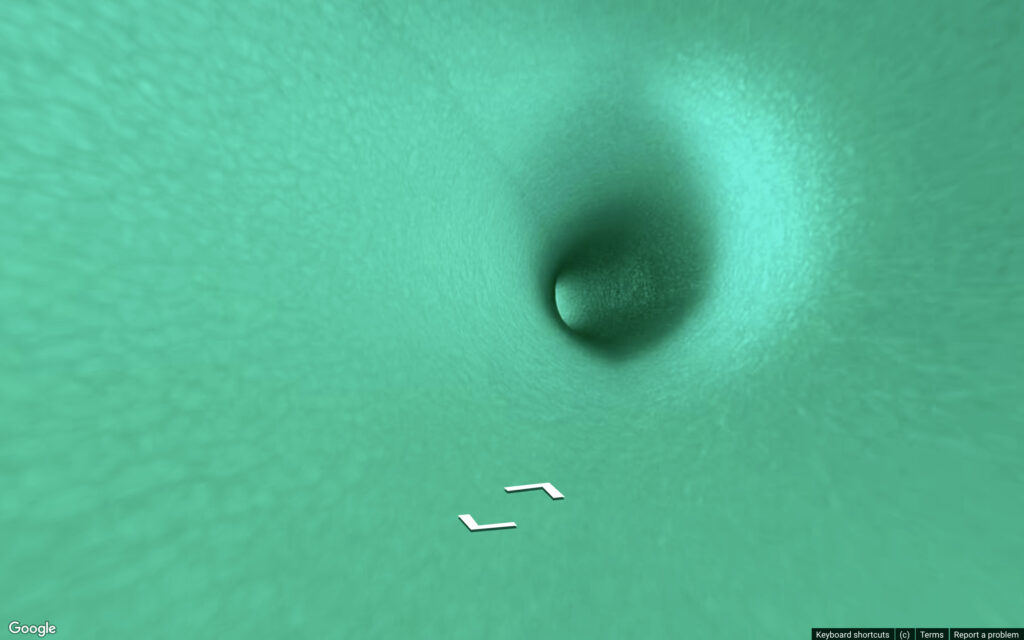A corner, by definition, is the exterior part of a place where two sides, usually of a building, converge. A nook is also the angle formed by the meeting of two walls or surfaces, but it is simultaneously a secluded, rather small place, a recess or hideaway. The English term “corner” encompasses both of these meanings, each of which carries a particular nuance in Spanish. Both terms share a fundamental spatial dimension, architectural and structural. Both the corner and the nook refer simultaneously to a crossing, a union, but also to a cut—only disparate elements can meet. An exposed crossroads or a hidden shelter, both unite the distant in an encounter that always promises separation.
The exhibition A Corner in Wheat presents a dialogue between Beatriz Olabarrieta and Mario Santamaría through a series of spatial interventions centered around the concept of cutting. Inspired by the unique architecture of Dilalica and the traces of its historical memory, both artists introduce subtle shifts across various elements—architectural, mechanical, symbolic… Once reassembled, these elements leave behind material traces that create moments of disorientation within the space, drawing attention to objects that explore a logic of disassembly and reassembly into new forms.
Follow us on Instagram to stay up-to-date with our latest programming and news.
P.S. You are receiving this email because you have previously subscribed or been in contact with Dilalica. If you no longer wish to receive our emails, you can unsubscribe at any time.
Beatriz Olabarrieta’s installation, Evidence of Conditioned Behaviour, explores how different objects and bodies respond to the application of mechanical forces. The repetition of an apparently automatic gesture towards a spring is transformed into a renewing act, as it investigates the limits of materials and their reactions under pressure. Almost in the manner of a scientific demonstration, this installation could be viewed as an experiment in which the artist devises a method, selects a series of variables that determine the forces affecting the spring, and then allows the audience to make the observations that reveal the correlations. Conditioned behavior thus uncovers the relationship between the intrinsic dynamics of the spring and the machine’s attempt at transformation. It is at this intersection, at this corner where the artist conducts this architectural intervention, that new evidence of the physical behavior of materials emerges, as well as new possibilities for interpreting this encounter.
Mario Santamaría, in turn, takes the Medusa Submarine Cable System project and transforms the exhibition space into a unique landing point. The Medusa SCB is a telecommunications infrastructure consisting of 8,700 km of submarine fiber optic cable, scheduled for completion in 2026 and designed to improve connectivity in the Mediterranean by linking Europe with North Africa. This cable enables high bandwidth, accommodating the increasing internet traffic and data transmission. Currently, submarine cables handle 98% of international internet traffic. Santamaría explores this intersection where the material and the virtual, fiction and reality converge, by articulating a landing point at the entrance of Dilalica, accompanied by images of the cables’ interior and a possible route for this underwater circuit.
At the atomic level, a physical cut entails breaking the bonds that hold atoms together in a material. When sufficient force is applied, the tool making the cut overcomes the cohesive forces, breaking the atomic bonds and causing the material to fracture. In her text Cut! Reproduction and Recombination, artist and theorist Hito Steyerl uses the film that lends its title to this exhibition, A Corner in Wheat (1908), as a case study where cinematic cutting and economic cutting converge. This was the first film to introduce parallel editing, and A Corner in Wheat addresses the operations of the Chicago stock exchange and the devastating effects of speculation on the wheat farmers. In a sense—through what we could call an updated parallel montage—this exhibition also addresses how cuts affect bodies and the impact they have on them. Beatriz Olabarrieta and Mario Santamaría, each from the uniqueness of their artistic practices, offer an exploration of how crossings, whether material or symbolic, shape new realities, new nooks, opening up possibilities for transformation and for recomposing what has been fragmented.
Exhibition by Beatriz Olabarrieta and Mario Santamaría at dilalica. Curated by Sergi Álvarez Riosalido. From September 19 to November 2, 2024.
